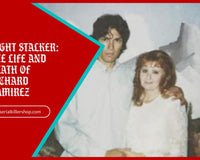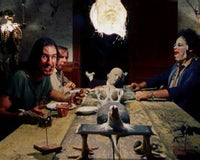This is the twisted tale of John George Haigh, better known as the Acid Bath Serial Killer. The Englishman committed mass murder in the 1940s and disposed of his victims by dissolving their corpses in metal oil drums filled with sulphuric acid. The acid bath murders are surely unlike any other true crime story.
John George Haigh's Early Life
John George Haigh was born on July 24, 1909, in Stamford, England. He was raised by his parents, John Robert and Emily Haigh, in Outwood, West Yorkshire. Haigh's parents were Plymouth Brethren, a conservative Protestant sect. His father believed that the world was evil, so the family needed to separate themselves.
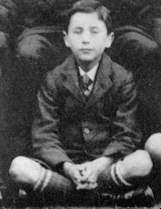
Haigh had a bleak and lonely childhood due to his parents' extreme religious values. He didn't have any friends growing up, mainly associating with his few pets and his neighbor's dog. Haigh's father even built a tall fence around their yard to prevent contact from the outside world.
Young Haigh had a passion for classical music. He eventually taught himself how to play the piano at home and often attended orchestral concerts. Haigh won a scholarship to attend Queen Elizabeth Grammar School, and was offered another scholarship to Wakefield Cathedral, where he became one of their choirboys.
John Gets Married
John Haigh married the 23-year-old Beatrice 'Betty' Hammer on July 6, 1934. Betty was often described as a lively woman and a 'good-time' girl. Upon marriage, the couple barely knew each other. However, Haigh managed to impress the young woman with his manners and charm, so she said yes without hesitation when he asked her to be his bride.
After four short months, Betty left Haigh upon his arrest for forging vehicle documents. While Haigh was carrying out his prison sentence, Betty gave birth to his child but gave it up for adoption.
The Acid Bath Murders
The Inspiration
In 1936, John George Haigh moved to London, becoming a chauffeur for William Donald McSwan. He also posed as a solicitor named William Adamson, selling fraudulent stock shares.
His shady business was soon uncovered when someone noticed he misspelled Guildford, where his office was "located," on his letterhead. This earned him yet another prison sentence for fraud, and this time he would spend four years behind bars.
Haigh was released shortly after World War II started. However, he didn't learn his lesson as he was sentenced for fraud several more times. During his time behind bars, Haigh got an idea that he would later use to cover up his killings.
One of his regrets was that he left victims behind to accuse him. Haigh spent time in prison studying the French murderer, Georges-Alexandre Sarret, who disposed of his victims' bodies with acid. Haigh tested this on mice, finding it only took 30 minutes for them to dissolve in the acid.
The McSwan Family
While Haigh worked as an accountant at an engineering firm, he ran into William McSwan, his former employer and old friend, in a Kensington pub. While the two were catching up, McSwan introduced Haigh to his parents, Donald and Amy.
McSwan bragged about working for his parents as a landlord for their properties in London, causing Haigh to be jealous of his lifestyle. On September 6, 1944, McSwan disappeared. Haigh lured him into a basement on Gloucester Road with plans to kill his first victim.
Once in the basement, Haigh bashed him over the head with a lead pipe, then threw McSwan's body in a metal drum filled with concentrated sulphuric acid. Haigh returned two days later, finding that the body was mostly dissolved. He then poured the remains down a manhole.
Haigh told McSwan's parents that their son was hiding in Scotland to avoid the draft as a cover-up. He then took their son's place, living with them and collecting rent at their properties. However, they became worried about their son, who had not returned once the war was over.
Haigh would take his next victims, Donald and Amy McSwan, on July 2, 1945. He lured them to Gloucester Road by telling them that their son had returned for a surprise visit. Haigh proceeded to strike the couple in the head and threw the bodies in sulphuric acid as well.
Posing as their son, Haigh stole their pensions checks and sold their properties for £8,000, using the money to move to the Onslow Court Hotel in South Kensington.
The Hendersons
Having a gambling problem, the Acid Bath Murderer ran out of his stolen funds by 1947. This gave him the urge to find his next victims to kill and rob. Haigh would soon meet Dr. Archibald Henderson and his wife, Rose Henderson.
Haigh pretended to be interested in a house they were selling. Taking a liking to Haigh, Rose invited him to play piano at their housewarming party. While at their flat, the serial killer stole Dr. Henderson's revolver.
The murderer decided to relocate his operations, moving his metal drums to a small workshop he rented on Leopold Road in West Sussex. On February 12, 1948, he drove Henderson to his workshop, telling him that he wanted to show him an invention.
When they entered Haigh's workshop, he shot Dr. Henderson in the head without hesitation. After he called Mrs. Henderson, telling her she needed to come because her husband had fallen ill. He shot her in the head with the revolver as well.
After Haigh covered up the murder using his typical method, he forged their signatures on a letter that allowed him to sell their possessions for £8,000. He sold everything but their dog and their car, keeping them for himself.
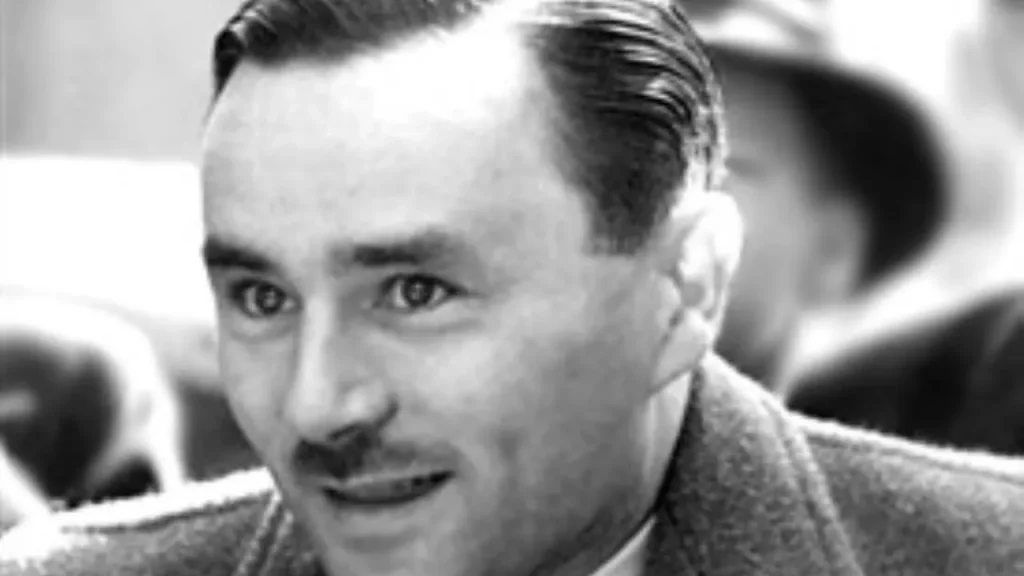
A Killer Is Captured
Mrs. Olive Durand-Deacon
After Haigh's five successful killings, he decided to rent a larger warehouse on Leopold Road. In this warehouse, he would murder his final victim.
69-year-old Olive Durand-Deacon would capture Haigh's attention. She was the widow of a wealthy solicitor, John Durand-Deacon, and Haigh's neighbor at the Onslow Court Hotel. At the time, Haigh was posing as an engineer, so Mrs. Durand-Deacon told him about an idea for artificial fingernails. He saw this as a perfect opportunity and invited her to his warehouse.
Once inside, the Acid Bath Murderer shot Olive Durand-Deacon in the back of the neck with Dr. Henderson's stolen revolver. He then stripped her of her valuables, including her Persian fur coat, and submerged her body in sulphuric acid.
The next day, guests at the hotel were concerned about Mrs. Durand-Deacon being absent from breakfast, asking Haigh if he knew where she was. He told them that the two had planned to meet the previous day, but she was a no-show.
Suspicions Arise
When Mrs. Durand-Deacon was still missing the following day, it became apparent that something was wrong. To keep the guests from becoming suspicious of him, Haigh asked Mrs. Lane, a concerned guest from the previous day, if she had heard anything about the missing woman.
Mrs. Lane said that she hadn't heard anything and planned to go to the Chelsea Police Station later. Haigh offered to join her and drove Mrs. Lane to the police station to file a missing person report. When they arrived at the station, Sergeant Lambourne was apprehensive about Haigh. The following morning, the Sergeant contacted the Scotland Yard Record Office and discovered Haigh's record.
That same morning, Haigh went to his warehouse to empty Mrs. Durand-Deacon's liquified body, making the misstep of pouring it on the ground outside. He then drove to Horsham to have Durand-Deacon's jewellery appraised. When he returned to the hotel, a group of officers was waiting for him. Haigh gave them a statement that retold his story about the missed meeting.
The following Saturday, the police investigated Haigh's warehouse on Leopold Road. They discovered a rubber apron, a gas mask, empty glass carboys, a recently fired revolver, and a dry cleaning receipt for Mrs. Durand-Deacon's Persian fur coat during their investigation.
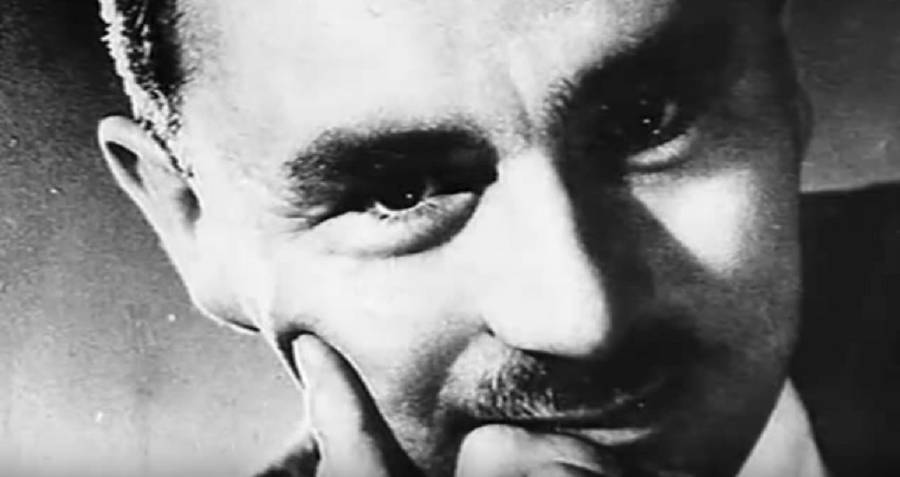
After finding the evidence in the warehouse, they decided to search the surrounding area. On a pile of rubble behind the building, the detectives found 28 pounds of melted body fat, part of a foot, human gallstones, and part of a denture. With that, they had identified their prime suspect.
John George Haigh Confesses
When Haigh was questioned by Detective Inspector Albert Webb, he asked, Tell me, frankly, what are the chances of anybody being released from Broadmoor?" (a high-security psychiatric hospital). The detective told Haigh that he could not tell him. To which Haigh replied, "Well, if I told you the truth, you would not believe me. It sounds too fantastic to believe."
And with that, Haigh confessed that he killed Durand-Deacon, the McSwan Family, and the Hendersons. He also told the detective that he killed three others, a young boy named Max, a girl who lived in Eastbourne, and a woman from Hammersmith. Although, these victims cannot be confirmed.
The Acid Bath Trial
John George Haigh's trial took place on July 19, 1949, at Lewes Assizes and finished the following afternoon. At the trial, Haigh pleaded insanity, telling the court that he had vampiric desires and drank the blood of his victims.
To further prove his reason for the murders, he said he had dreams dominated by blood during his childhood. He told the court that his gruesome dreams returned when he got in a car accident in 1944.
In his hallucination, "The whole forest began to writhe and the trees, dark and erect, to ooze blood ... A man went from each tree catching the blood...When the cup was full, he approached me. 'Drink,'" claimed Haigh. However, there was nothing to prove that he consumed his victims' blood.
By recalling his nightmares and claiming to be a vampire, Haigh was likely attempting to appear delusional to prevent his future execution. Upon hearing Haigh's insanity plea, the detective that questioned him about the murders told the prosecutor, Lord Shawcross, that he was asking about the chances of escaping from a psychiatric institution.
Shawcross urged the jury to reject Haigh's insanity defense because he committed the murders with malice aforethought. The defender, Sir David Maxwell Fyfe, called many witnesses into court to attest to Haigh's mental state.
The Verdict
Haigh's attempt to appear mentally insane failed. It only took the jury 15 minutes to find him guilty.
The judge presiding over the trial asked Haigh if he had anything to say for himself. To which he responded, "Nothing at all." The gavel was struck, and the judge sentenced John George Haigh to be executed by hanging.
John Haigh's Execution
While Haigh was on death row, awaiting his execution at Wandsworth Prison, it was reported that he asked one of the guards if he could have a trial run of his hanging to ensure everything would go according to plan. His request was likely denied.
Haigh provided his life story to the newspaper that funded his trial, wrote letters to his girlfriend- Barbara Stephens and his parents, who didn't have a chance to see him before his life would be taken away. He also got fitted for a death mask requested by Madame Tussauds.
On August 10, 1949, John George Haigh, the Acid Bath Murderer, would meet his demise. The killer was led to the gallows by Chief Executioner Albert Pierrepoint. It was there where John George Haigh would drink brandy and take his final breath.
FAQ'S
How Did The Acid Bath Killer Get Caught?
Yes, John Haigh made the mistake of dumping the liquid sludge that was Olive Durand-Deacon outside of his warehouse. When the scene was investigated, police found a receipt for her fur coat, human body fat, a portion of a foot, and dentures that were confirmed to he Durand-Deacon's
What Is The Meaning Of 'Acid Bath'?
If you remember the infamous scene from Breaking Bad, you probably already know what an acid bath is. For the readers that don't, it involves dissolving bodies in a strong acid; Haigh's acid of choice was sulphuric. He sealed the bodies of his murder victims in 45-gallon oil drums, reporting that it took about two days for them to completely dissolve.
What Was John George Haigh's Childhood Like?
John Haigh reported having a lonely childhood overruled by his religious parents. Since he was not allowed to have any friends, he owned several pets and cared for the neighbor's dog.
He received an education from Queen Elizabeth Grammar School and Wakefield Cathedral.
What Were John George Haigh's Last Words?
Before his death, John Haigh wrote his last words in a letter to his girlfriend, Barbara:
"It is difficult to say farewell under these circumstances, but you will understand that you will always be in my thoughts. You know I have been proud of our association: it has always been an honorable one. I shall remember your great kindness and devotion. Now I must leave you."
Summary
John Haigh, The Acid Bath Murderer, was one of England's most notorious serial killers. His case received widespread media coverage due to his unconventional murder method of dissolving his victims in acid.
Do you think Haigh was actually insane or just claimed to be?
Do you question Haigh's guilt about the unconfirmed murders?





